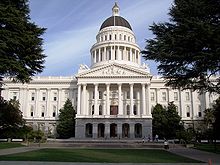Application modernization seen as one remedy for state budget woes

You could say that these are times that try politicians' souls -- at least the ones that have souls. The federal deficit is one thing -- but state governments have also been feeling the pinch, with billions of dollars of red ink washing through state capitals. At this point, at least 23 of the 50 US states are experiencing budget shortfalls.
That's why it was interesting to see Government Technology's David Raths' report on one avenue a number of cash-strapped state governments have been pursuing to reduce expenses: application modernization and consolidation. He cites the work of Cathy Cleek, CIO and chief of California's Technology Services Division of the Franchise Tax Board (FTB):
"Like her counterparts from other states, Cleek is in the process of updating a legacy system with dozens of moving parts, some of which are decades old. 'There are pieces of our system that are healthy and we have no need to change,' she said, 'but there are others that need to be pulled out and modernized.' Some applications were designed in an era when the FTB dealt only with paper, but now the agency is taking 80 percent of returns digitally. 'Now we will begin using imaging to digitize the paper, so we have one work process, not two,' explained Cleek."
Other states, including Pennsylvania, Massachusetts, and Kentucky, have also commenced application modernization efforts. These initiatives include service oriented architecture approaches to enable the sharing of services between state agencies. But it's going to take time. Surprisingly. according to one consultant, "the movement from stovepiped applications toward integrated tax systems began 20 years ago, but many states still haven’t modernized yet."
Along these lines, a study issued last year by the National Association of State Chief Information Officers (NASCIO), TechAmerica and Grant Thornton, says well-managed and focused IT initiatives may help pick up the slack where spending is being cut back. (PDF Executive Summary available from NASCIO.) In the three years following the study, the study found, 76 percent of state-level CIOs said they planned to expand IT shared services and managed services. New customers most likely to participate in IT shared services include state executive branch agencies and public educational institutions at all levels.
Echoing the lessons of many an SOA-based initiative over the years, California tax CIO Cathy Cleek said her agency was cautious about a "big bang" approach to application modernization. Instead, they are working with a "phased-in approach and an SOA model that overlays Web services on components such as the main accounting system that’s being left in place." In addition, the state has tied performance incentives to the vendor they are working with to see the project through. The new service-oriented systems are expected to bring in an additional $1 billion a year to the state, through greater efficiencies and improved data analytics, she is quoted as saying.
